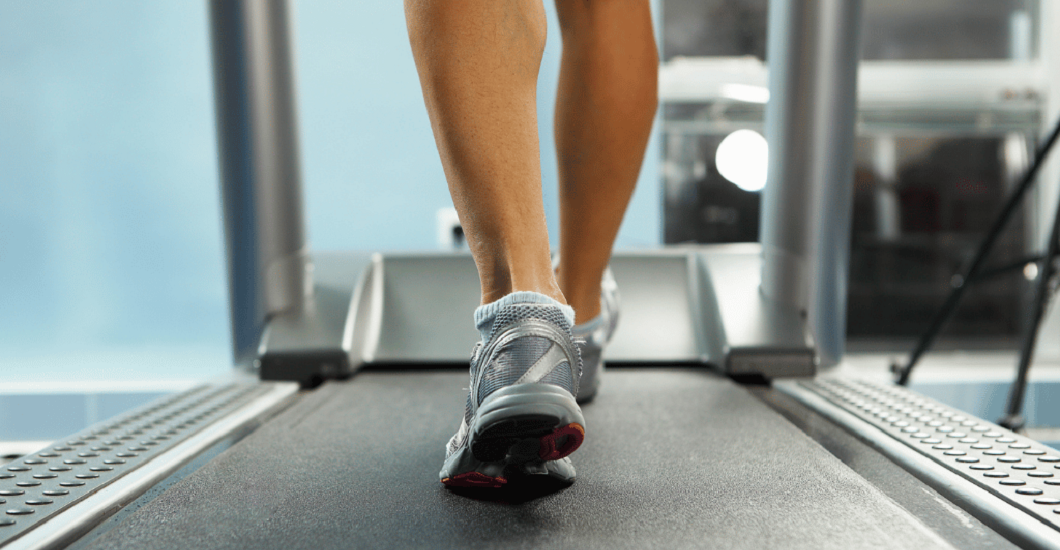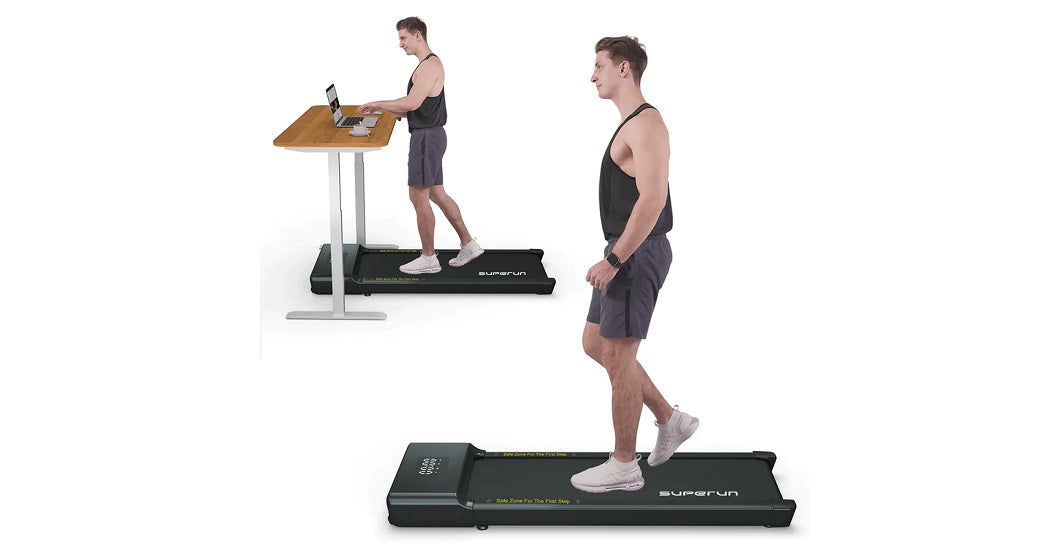When it comes to treadmills, individuals have the option to choose between two main types: manual treadmills and motorized treadmills. These two exercise machines offer distinct features and functionalities, catering to varying fitness preferences and goals. It is necessary to understand the differences between manual and motorized treadmills is essential for selecting the most suitable equipment based on one's fitness level, objectives, and individual preferences.
Manual Treadmill
What is a Manual Treadmill?
A manual treadmill is a fitness equipment that operates without the aid of an electric motor. Unlike its motorized counterpart, which is powered by electricity, the manual treadmill relies entirely on the user's own effort to set the belt in motion. By walking, jogging, or running on the running belt, the user propels the treadmill forward, creating a self-paced workout experience. Manual treadmills are often designed with simplicity in mind, featuring a basic structure that requires no electrical connections, making them an eco-friendly and energy-efficient choice.
How Does a Manual Treadmill Work?
The operation of a manual treadmill is straightforward yet effective. As the user steps onto the running belt and starts walking or running, the friction between their feet and the belt causes it to move. The pace of the treadmill is entirely dependent on the user's own speed and intensity. The absence of an electric motor means that users have complete control over their workout, allowing them to adjust the intensity based on their fitness level and goals.
Advantages of Using a Manual Treadmill
Energy Efficiency and Eco-Friendly:
One of the most significant advantages of a manual treadmill is its green credentials. Since it operates solely on human power, it doesn't consume electricity, reducing energy consumption and your carbon footprint.
Lower Cost and Maintenance:
Manual treadmills are generally more affordable than motorized ones, making them a budget-friendly option. Additionally, they have fewer components and moving parts, leading to reduced maintenance costs and less frequent repairs.
Suitable for All Fitness Levels:
Whether you are a beginner or a seasoned athlete, a manual treadmill can accommodate all fitness levels. Users can control their pace and intensity, making it a versatile choice for various workout routines.
Simulates Real-Life Running Conditions:
Since manual treadmills require the user to generate momentum, they more closely mimic outdoor running. This factor can improve balance, coordination, and engage more muscle groups.
Limitations of a Manual Treadmill
No Automated Pace Adjustment:
Unlike motorized treadmills, manual treadmills don't offer automated speed adjustments, requiring users to change their pace manually.
Less Advanced Features:
Manual treadmills may lack some of the sophisticated features found in motorized versions, such as pre-set workout programs, heart rate monitoring, or connectivity options.
Physical Demands:
The user's effort is the sole driving force behind a manual treadmill. This can be physically demanding, and some users may find it challenging to maintain a consistent pace over extended periods.
Smaller Size and Weight Capacity Restrictions:
Manual treadmills are typically more compact and may have weight limits, which could be a consideration for taller or heavier individuals.

Motorized Treadmill
What is a Motorized Treadmill?
A motorized treadmill is a cutting-edge fitness equipment powered by an electric motor. Unlike manual treadmills, which rely solely on the user's movement for operation, a motorized treadmill uses the motor to drive the running belt, creating a seamless and automated exercise experience. With a control panel and various features, it offers a wide range of customization options, making it a versatile and user-friendly choice for cardio workouts.
How Does a Motorized Treadmill Work?
The heart of a motorized treadmill lies in its electric motor, which powers the movement of the running belt. As users step onto the treadmill and start walking or running, they can adjust the speed through the control panel. The motor responds to the selected speed setting, driving the belt to move at a consistent pace, allowing users to maintain their desired intensity effortlessly. Many motorized treadmills also offer incline adjustments, simulating hill climbs and adding variety to workouts.
Advantages of Using a Motorized Treadmill
Convenience and Efficiency:
Motorized treadmills offer the convenience of quick setup and effortless pace adjustments, making them ideal for time-constrained individuals who desire efficient workouts.
User-Friendly and Customizable:
With automated controls and pre-set workout programs, motorized treadmills cater to users of all fitness levels, allowing them to tailor their workouts to meet individual needs and preferences.
Joint-Friendly Cushioning:
Many motorized treadmills are equipped with cushioned decks, reducing the impact on joints and making them a safer option for individuals with joint sensitivities.
Versatility for Varied Workouts:
The ability to adjust speed and incline makes motorized treadmills versatile for various workout types, from walking and jogging to intense interval training.
Limitations of a Motorized Treadmill
Higher Cost:
Motorized treadmills tend to be more expensive than manual treadmills due to the added cost of the motor and electronic components. This can be a significant factor for those on a tight budget.
Maintenance and Repairs:
With more complex components, motorized treadmills may require more frequent maintenance and can be more prone to mechanical issues. Regular servicing and repairs can add to the overall cost of ownership.
Energy Consumption:
Unlike manual treadmills, motorized treadmills rely on electricity to power the motor, which can lead to increased energy consumption, contributing to higher utility bills.
Limited Portability:
Motorized treadmills are typically heavier and more substantial due to the motor and other components. Moving them around or storing them may be more challenging compared to lighter manual treadmills.
Dependence on Power Source:
A motorized treadmill requires access to an electrical outlet to function. In the event of a power outage or if the treadmill is used in off-grid locations, it becomes unusable until power is restored.
Lack of Muscle Engagement:
With the motor driving the belt, some argue that motorized treadmills may not engage the muscles as effectively as manual treadmills, where users propel the belt themselves, leading to a potentially less natural movement pattern.
Safety Concerns:
The automated nature of motorized treadmills means that users must be cautious when starting and stopping the treadmill. There is a risk of tripping or losing balance, especially for inexperienced users.
Less Simulation of Outdoor Conditions:
Unlike manual treadmills, which more closely mimic outdoor running due to user-powered movement, motorized treadmills may not provide the same level of simulation of real-life running conditions.
Noise Levels:
Motorized treadmills can produce some noise due to the operation of the motor, which may be a concern for users who prefer a quieter workout environment.

Manual Treadmill vs. Motorized Treadmill
Choosing between a manual treadmill and a motorized treadmill depends on individual preferences, fitness goals, and budget considerations. Let's compare the two types of treadmills across various factors to help you make an informed decision:
Power Source:
Manual Treadmill: Operates solely based on the user's effort. No electricity is required.
Motorized Treadmill: Powered by an electric motor to drive the running belt. Requires access to an electrical outlet.
Cost:
Manual Treadmill: Generally more budget-friendly, with lower upfront costs and reduced maintenance expenses.
Motorized Treadmill: Typically more expensive due to the motor and additional features, with potential ongoing maintenance costs.
Workout Experience:
Manual Treadmill: Provides a more natural, user-driven workout experience. Users control the pace and intensity through their movement.
Motorized Treadmill: Offers automated speed and incline adjustments, making it easier to set and maintain a specific pace or workout program.
Versatility:
Manual Treadmill: Suitable for walking, jogging, or running. The intensity depends on the user's effort and pace variations.
Motorized Treadmill: More versatile with adjustable speed and incline, catering to different fitness levels and allowing for diverse workout options.
User-Friendliness:
Manual Treadmill: Requires users to set the pace manually, which may be more challenging for some individuals.
Motorized Treadmill: Easy to use, especially for beginners, with straightforward controls for speed and incline adjustments.
Space and Portability:
Manual Treadmill: Typically more compact and lightweight, making it easier to move and store.
Motorized Treadmill: Heavier and may require more space, which could be a consideration for smaller living spaces.
Energy Efficiency:
Manual Treadmill: Environmentally friendly, as it does not consume electricity.
Motorized Treadmill: Relies on electricity, leading to higher energy consumption.
Safety:
Manual Treadmill: Slows down and stops immediately when the user stops moving, reducing the risk of accidents.
Motorized Treadmill: Requires users to use safety features, such as emergency stop buttons, to halt the belt.
Joint Impact:
Manual Treadmill: Manual treadmills may have a slightly higher impact on joints due to the user's propulsion of the belt.
Motorized Treadmill: Some models feature cushioned decks, reducing the impact on joints.
|
Feature |
Manual Treadmill |
Motorized Treadmill |
|
Power Source |
User's Effort |
Electric Motor |
|
Cost |
Lower upfront cost and maintenance |
Higher upfront cost and maintenance |
|
Workout Experience |
User-driven pace and intensity |
Automated speed and incline adjustments |
|
Versatility |
Limited adjustment options |
Adjustable speed and incline settings |
|
User-Friendliness |
Requires more effort to maintain pace |
Easy to use with automated controls |
|
Space and Portability |
Compact and lightweight |
Usually more heavier and may require more space |
|
Energy Efficiency |
No electricity consumption |
Relies on electricity for operation |
|
Safety |
Slows down and stops with user's pace |
Requires safety features for stopping |
|
Joint Impact |
Slightly higher impact on joints |
Some models offer cushioned decks |
|
Suitable Users |
Users comfortable with manual pace |
Users who prefer automated workouts |
|
Environmentally Friendly |
Yes |
No |
SupeRun Motorized Treadmill
SupeRun motorized treadmills with smaller sizes and lighter weights have become increasingly popular due to their practicality and versatility. These compact treadmills cater to individuals with limited space, busy lifestyles, or those who require easy mobility. Let's explore the advantages and characteristics of motorized treadmills with smaller sizes and lighter weights in SupeRun:
Advantages:
Space-Saving Design:
Compact motorized treadmills are designed to occupy less floor space, making them ideal for small apartments, condos, or home gyms with limited room.
Portability:
The lighter weight of these treadmills makes them easy to move around the house or store when not in use. Some models even have folding mechanisms for effortless storage.
Convenience for Apartments and Urban Dwellers:
Urban dwellers often face space constraints, and these treadmills provide a convenient solution for staying active without sacrificing valuable living space.
Easy Setup:
The smaller size and simplified design translate to quicker assembly and setup. Some types of treadmills do not need to be installed, allowing users to start their workouts sooner.
Versatility:
While smaller in size, these treadmills often retain most of the features and functionalities of their larger counterparts, providing a versatile workout experience.
Affordability:
Smaller motorized treadmills tend to be more budget-friendly than larger, high-end models, making them accessible to a broader range of users.
Characteristics:
Narrower Running Surface:
Smaller treadmills typically have narrower running belts compared to larger models. While this may limit side-to-side movement, it still allows for effective walking, jogging, and running.
Lower Weight Capacity:
Compact treadmills usually have a lower weight capacity compared to standard-sized treadmills. Users should ensure they stay within the specified weight limit for safe operation.
Basic Console Features:
To maintain a sleek and minimalist design, smaller motorized treadmills may have a more straightforward console layout with essential features, such as speed control and basic workout metrics.
Quiet Operation:
The smaller motors used in these treadmills often contribute to quieter operation, which can be beneficial for home use, especially in shared living spaces.

Conclusion
In conclusion, a manual treadmill is an excellent option for those seeking a budget-friendly, eco-friendly, and user-controlled workout experience. It is suitable for users who prefer a more natural and less automated exercise session. On the other hand, a motorized treadmill is ideal for individuals who desire convenience, versatility, and advanced features to enhance their workouts. The choice ultimately comes down to personal preferences, fitness objectives, and the level of technological assistance one prefers during their cardio training.






Leave a comment
All comments are moderated before being published.
This site is protected by hCaptcha and the hCaptcha Privacy Policy and Terms of Service apply.